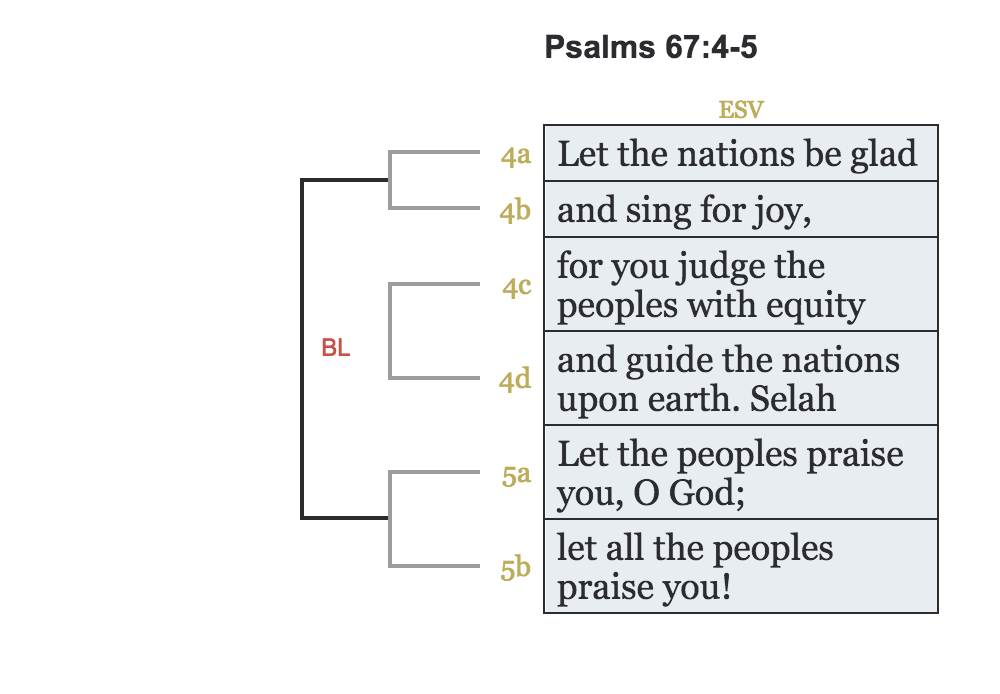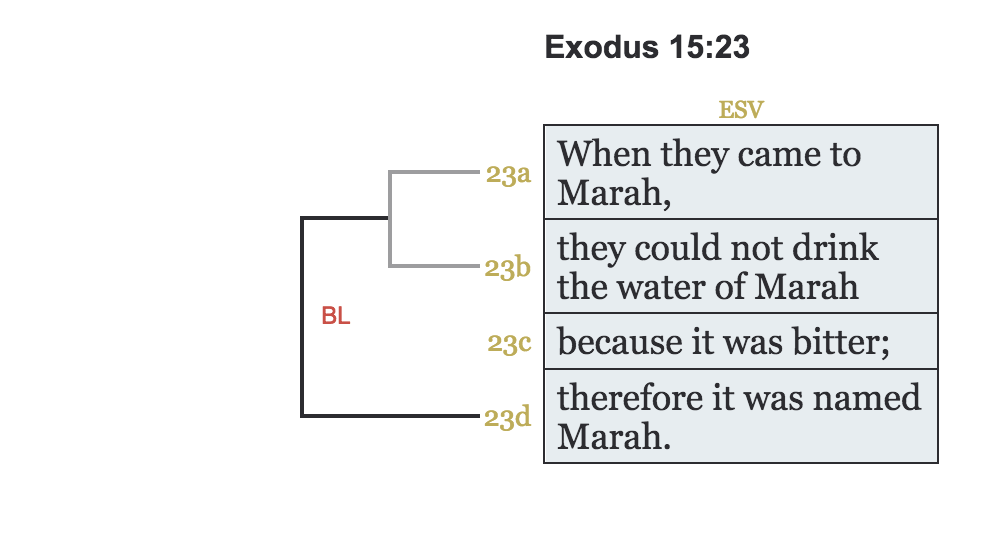Lesson 4 | Support by distinct statement
Where is the ground?
Two distinct ideas
The next subcategory of Subordinate relationships is Support by Distinct Statement. With each relationship in this category, we are presented with a new and distinct idea that is serving to give a logical support. You know you are dealing with a relationship in this category when you can identify two clearly different ideas at play, in which one is supporting, completing or qualifying the other.
The first three relationships in this subcategory are closely related to one another, all having to do with giving a logical basis to an idea.
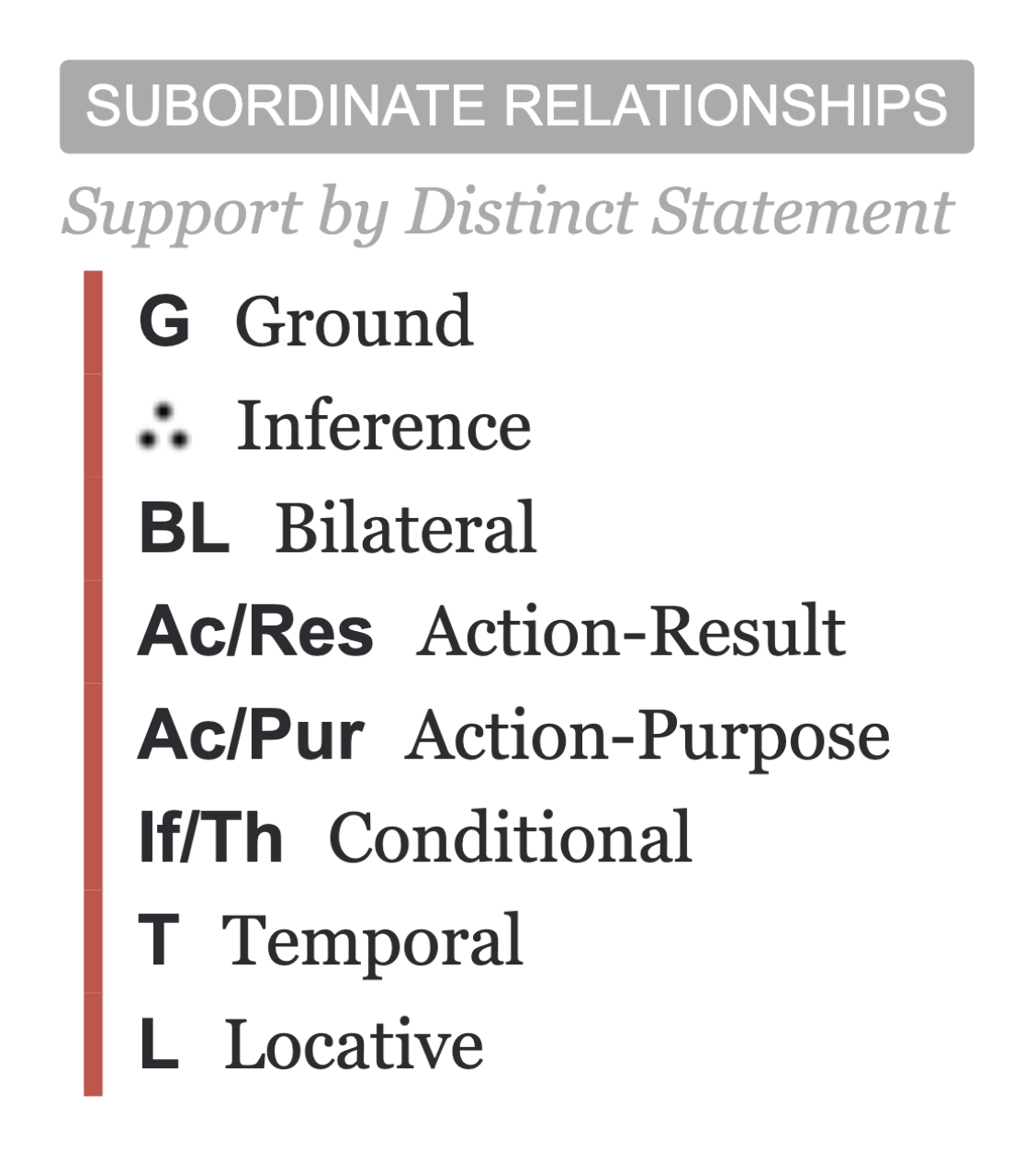
Ground (G)
Definition: An idea and the argument or reason for that idea (supporting piece follows).
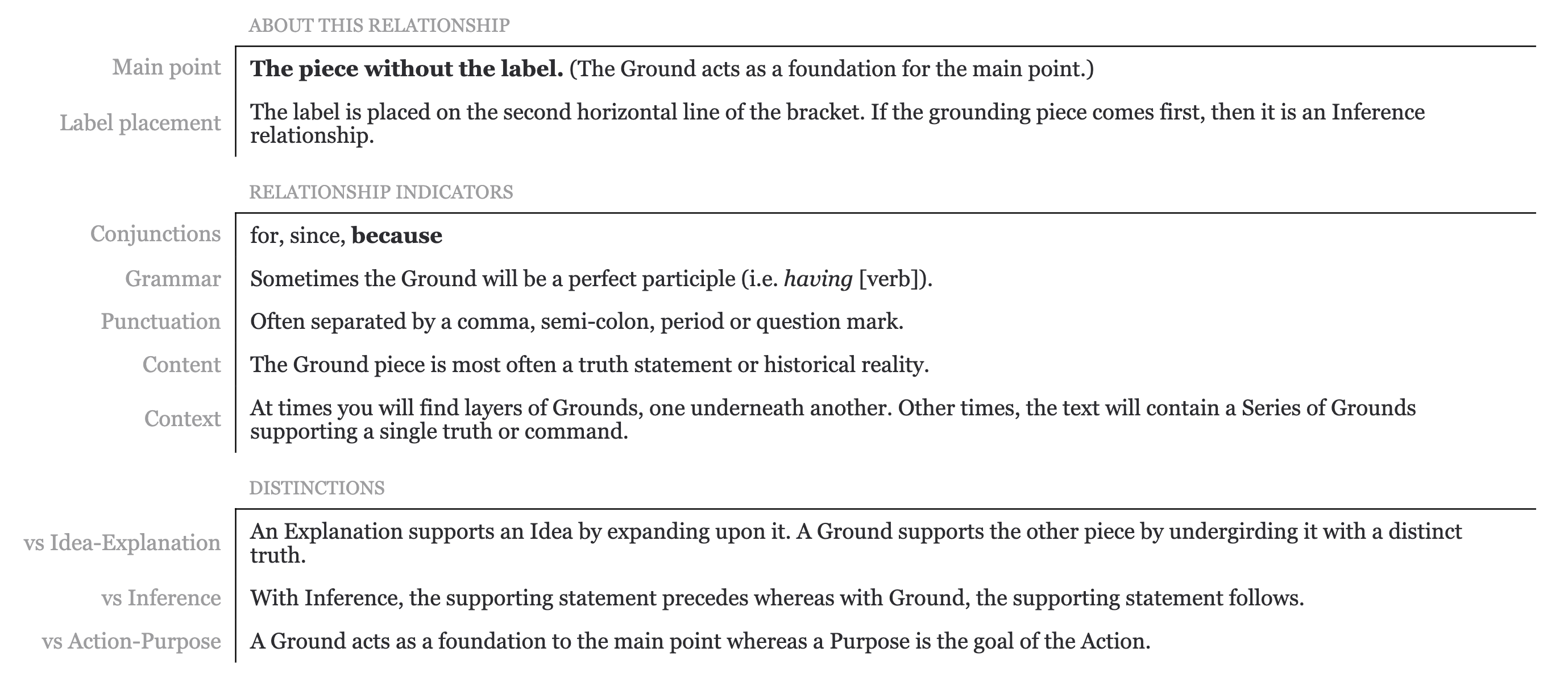
Everyday example: Can we put on a video because 25 children in our house is driving me insane.

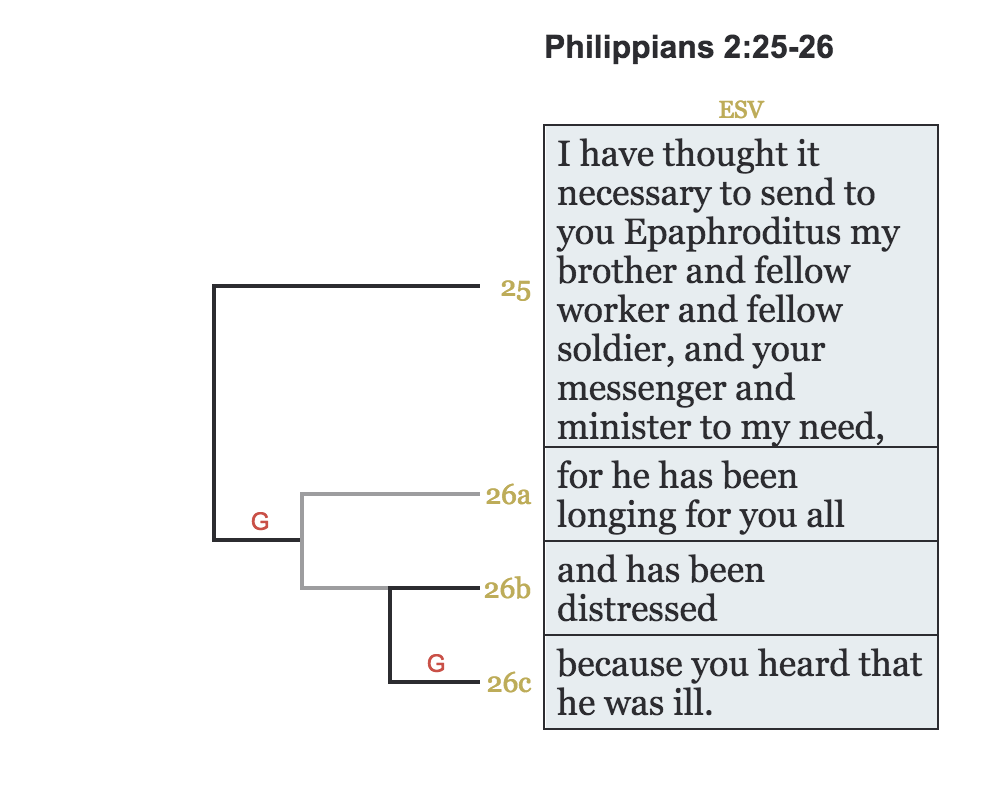
Note
“For” is a common conjunction for the Ground relationship. However, sometimes it introduces an explanation, not a logical basis. The easiest way of determining which relationship is more appropriate for a given text is to ask whether the author/speaker is restating what was said before with further explanation (Idea-Explanation) or making a distinct statement which supports what preceded (Ground).
Jesus is radiant in glory, for he shines forth perfection. (Idea-Explanation) Jesus is radiant in glory, for he is just like the Father. (Ground)
Inference (∴)
Definition: An idea and the argument or reason for that idea (supporting piece precedes).
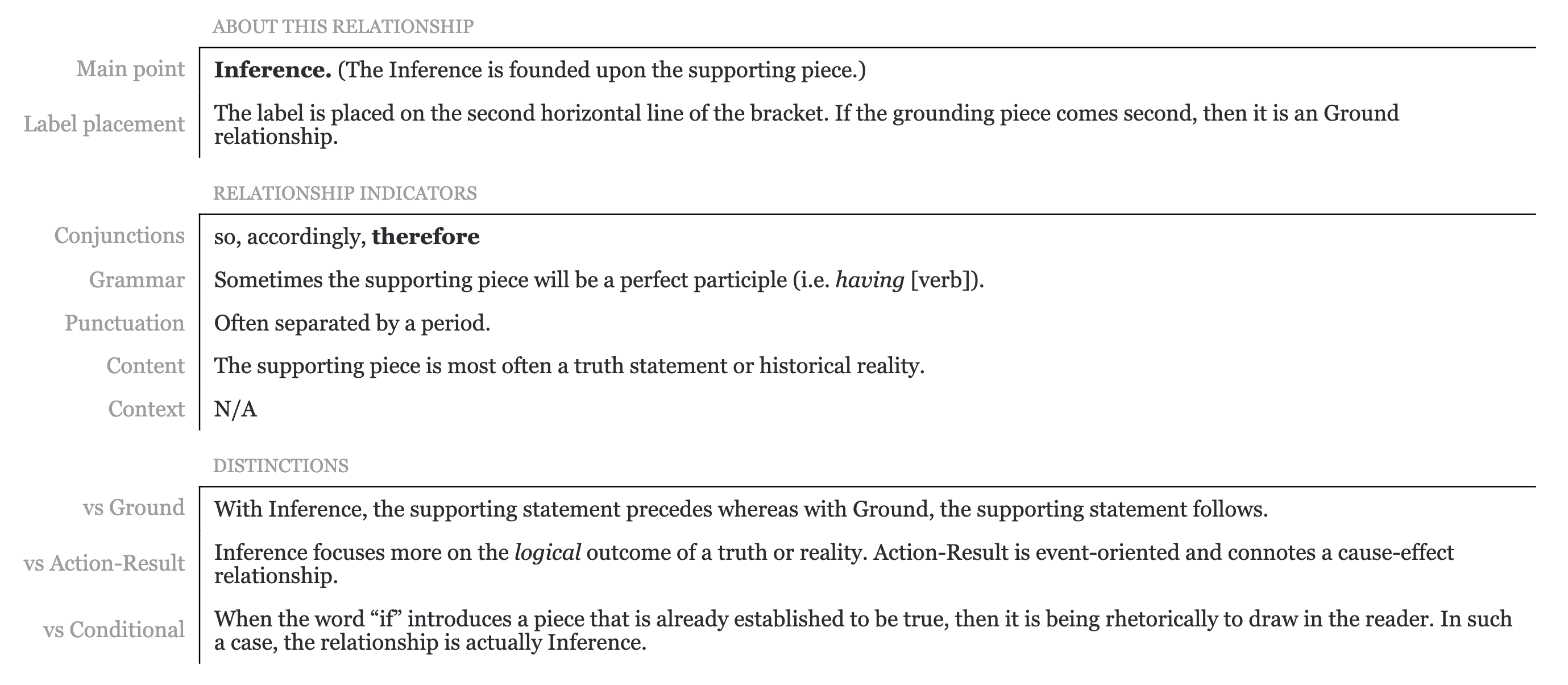
Everyday example: You are my best friend, so you have to come to my party!
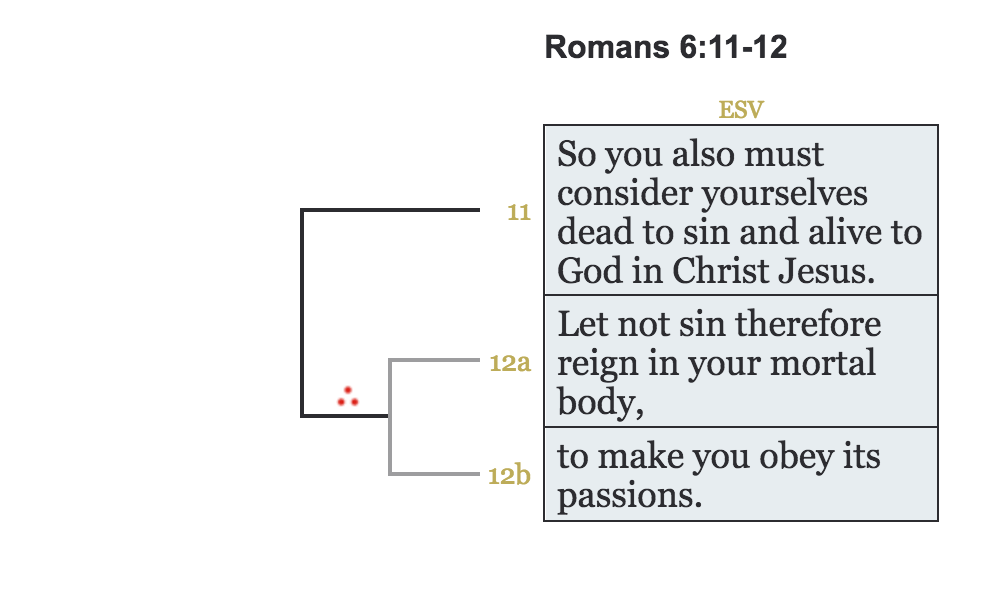
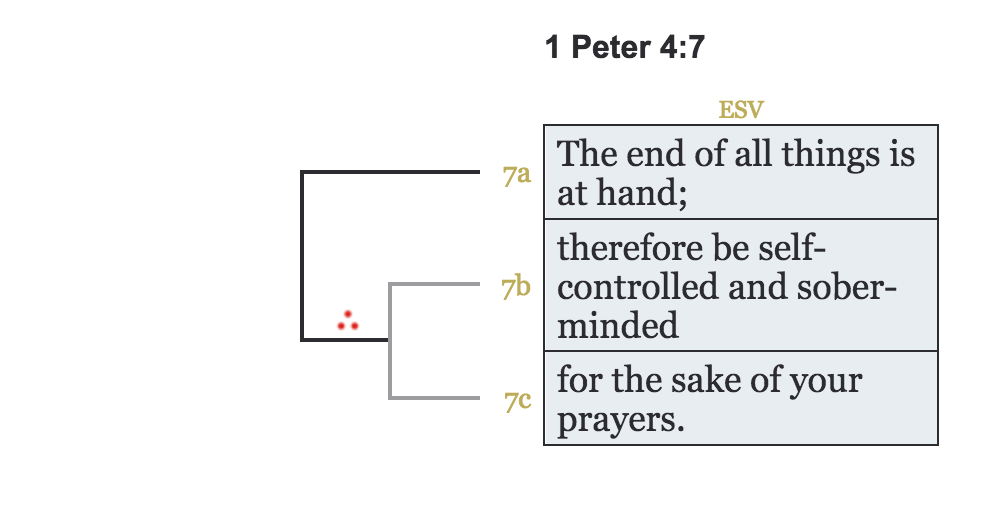
Note
In the Romans 6:11-12 example, the conjunction “therefore” is not at the beginning of the proposition, even though it is indeed connecting verse 11 with verse 12. Don't let conjunction placement like this trip you up!
Bilateral (BL)
Definition: A piece that acts as a basis for two other pieces, one preceding and one following.

Everyday example: We should invite everyone. It’s his 10th birthday! Let’s do something bigger this year.
